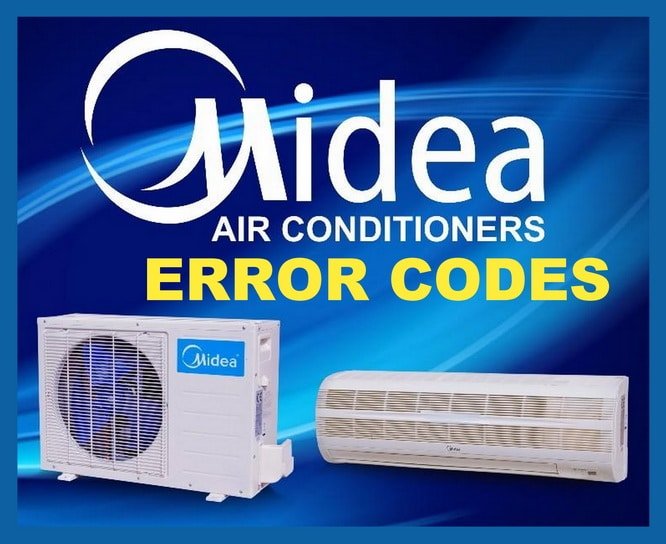
In simple terms, when your air conditioner displays an E3 error code, it’s like your car’s dashboard lighting up with a warning sign. Just like you’d want to know if there’s a problem under the hood, you should understand what this error message means for your AC. This code typically relates to an issue in the compressor, the heart of your air conditioner, which pumps refrigerant through the system, enabling it to cool your space. If the compressor isn’t working right, the whole operation can be thrown off balance.
So, is it safe to continue using your Midea air conditioner with this error? The short answer is that continuing to use your AC with an unresolved E3 error might not be ideal. Your air conditioner might struggle to cool effectively, could consume more power, and potentially worsen the existing problem. Let’s take a closer look at what causes this error and what steps you can take to address it.
Understanding the E3 Error Code
First things first, let’s break down what the E3 error code actually represents. This code usually indicates a malfunction with the compressor or related components within your Midea AC unit. Think of the compressor as the engine of your air conditioner—it’s essential for the system to run smoothly and ensure you’re feeling that cool breeze on a hot summer day.
When the E3 code appears, it often means there’s been a disruption in the electrical signals that tell the compressor how to operate. This could be due to a faulty sensor or even an issue with the wiring. Imagine driving a car with a glitchy accelerator; it might sputter or not respond as it should, which is precisely the kind of hesitation your AC might be experiencing with this code.
Moreover, the E3 error can also stem from issues such as a refrigerant leak or a blockage in the system. Just like a blocked water pipe might affect water flow, any obstruction in the refrigerant path can hinder your air conditioner’s ability to function properly. But don’t panic! There are some steps you can take to get to the bottom of this error and get back to enjoying comfortable indoor air.
Is It Safe to Keep the AC Running?
You might be wondering if it’s okay to keep using your air conditioner with this error flashing. Well, here’s the deal: ignoring the E3 error code could lead to bigger headaches down the line. Continuing to run your AC with this problem could cause the compressor to overheat or become damaged, just as you might risk damaging a car engine by driving with a warning light on.
Running the unit in this state could also lead to inefficient cooling, meaning more sweat and potentially higher electricity bills as the system struggles to do its job. Think of it as trying to keep your home warm by using a fireplace with a flue that won’t open—it’s not going to work efficiently, and it might even cause harm.
So, what’s the best plan? It’s generally smart to give your air conditioner a break and seek professional help. This way, you can prevent any potential damage to the compressor and ensure that your unit is in tip-top shape. Fixing this issue sooner rather than later can save money, prevent the hassle of more significant repairs, and keep your home environment comfy.
Steps to Address the E3 Error
Alright, you’ve spotted the E3 error, and you’re eager to set things right. Here’s a step-by-step approach to help you tackle this issue effectively. Remember, while some basic checks can be done by yourself, it’s often best to call in the experts for a thorough inspection and repair.
Firstly, try resetting the system. Unplug the unit from the power source, wait a few minutes, and plug it back in. This simple action works like rebooting a computer, potentially clearing minor glitches. If the error persists, however, it’s a sign that something deeper could be amiss.
Next, check for obstructions around the compressor. Dust and debris can sometimes cause overheating. Imagine a vacuum cleaner’s filter getting clogged—less airflow means less efficiency. Similarly, ensuring the area around your outdoor unit is clear can prevent unnecessary strain on the system.
If these steps don’t resolve the error, consider reaching out to a professional technician. They’ll have the tools and expertise to diagnose the issue accurately, whether it’s fixing a refrigerant leak or addressing electrical faults. Professional servicing can help prolong the lifespan of your air conditioner and keep it operating safely.
Preventative Measures
To prevent encountering the E3 error in the future, regular maintenance is key. Think of it like routine check-ups for your health—keeping things in check before they escalate into something more serious. Regularly cleaning filters and scheduling professional check-ups can significantly reduce the chance of errors popping up.
Change your AC filters regularly. A dirty filter can impede airflow, causing the system to overwork. It’s like trying to breathe through a clogged mask; your air conditioner needs clear passageways to function efficiently.
Additionally, always keep an eye on your energy bills. A sudden spike could be a hint that your system isn’t running optimally. This could save you from not just surprise expenses but also the inconvenience of unexpected breakdowns.
Ultimately, staying on top of these maintenance tasks can help you enjoy uninterrupted comfort from your Midea air conditioner, free from pesky error codes like E3. So, consider setting reminders for routine maintenance—it’s a small effort that pays off big time in the long run.